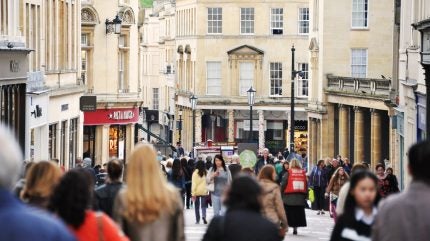
Despite this uptick, overall like-for-like (LFL) retail sales across discretionary categories, which include fashion, homewares, and lifestyle, continued to trail behind inflation rates for the month, compared to positive growth base of 3.2% from June of the previous year.
BDO retail and wholesale head Sophie Michael said: “Consumer spending continues to be challenged, with little optimism for retailers. We know that consumers are being incredibly cautious when it comes to discretionary spend, given the significant noise around rising job losses and volatility in the geopolitical landscape.

Discover B2B Marketing That Performs
Combine business intelligence and editorial excellence to reach engaged professionals across 36 leading media platforms.
The report indicates that fashion retail experienced a modest increase in total like-for-like sales of +0.8%, which is slightly lower than the +0.9% base from the same month last year.
However, it notes that preference for online shopping over physical stores was evident as in-store sales saw a decline of 0.2% in June, while e-commerce sales soared by 10.0%, compared to a decline of 6.7% and a growth of 9.9% respectively from the same month in the prior year.
This trend highlights the ongoing challenges for brick-and-mortar retailers who are competing with the convenience of next-day delivery and straightforward return processes offered by online stores, stated the report.
Fashion LFLs were negative during both the beginning and end of June, dragged down by weak in-store performance. Conversely, online sales remained robust throughout the month.

US Tariffs are shifting - will you react or anticipate?
Don’t let policy changes catch you off guard. Stay proactive with real-time data and expert analysis.
By GlobalDataIn the third week of June alone, online LFL sales jumped by 21.43% from an already strong base of 15.33% from the previous year.
The lifestyle category saw a marginal increase of 0.3% in total LFLs against a base of +7.5% from last year’s corresponding month. Physical store sales for this category saw an increase of 1.1%, while online sales experienced a decrease of 3.1%.
Sophie Michael added: “There is also a growing gap between the performance of physical stores and online retail. Perhaps this is because online retailers have greater agility to adjust their inventory and promotional material to quickly align to consumer preferences, such as promoting summer outfits in extreme high temperatures and pivoting to waterproofs when the rain arrives.
“Some retailers are making targeted investments to improve their store estates to attract more footfall, but we need to see this across the industry along with more support to revitalise our high streets. Store propositions need to be reinvented. Strategic and targeted investment is what is really required for retailers with a significant physical footprint to remain competitive. At the same time, retailers need to continue to invest in blending their physical and online offerings. Without this investment and local government support, we risk seeing further store closures which has a detrimental effect on our towns and communities.”





